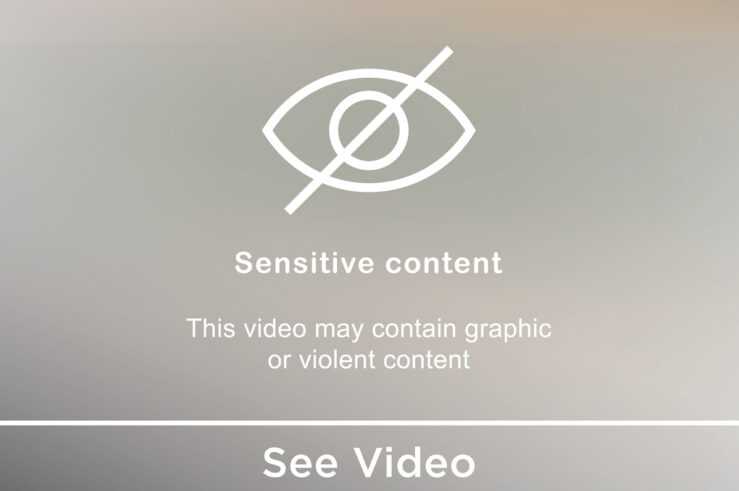In the past two weeks, Members of Congress from both parties have penned scathing letters to the FTC warning of the consequences (both to consumers and the agency itself) if the Commission sues Google not under traditional antitrust law, but instead by alleging unfair competition under Section 5 of the FTC Act. The FTC is rumored to be considering such a suit, and FTC Chairman Jon Leibowitz and Republican Commissioner Tom Rosch have expressed a desire to litigate such a so-called “pure” Section 5 antitrust case — one not adjoining a cause of action under the Sherman Act. Unfortunately for the Commissioners, no appellate court has upheld such an action since the 1960s.
This brewing standoff is reminiscent of a similar contest between Congress and the FTC over the Commission’s aggressive use of Section 5 in consumer protection cases in the 1970s. As Howard Beales recounts, the FTC took an expansive view of its authority and failed to produce guidelines or limiting principles to guide its growing enforcement against “unfair” practices — just as today it offers no limiting principles or guidelines for antitrust enforcement under the Act. Only under heavy pressure from Congress, including a brief shutdown of the agency (and significant public criticism for becoming the “National Nanny“), did the agency finally produce a Policy Statement on Unfairness — which Congress eventually codified by statute.
Given the attention being paid to the FTC’s antitrust authority under Section 5, we thought it would be helpful to offer a brief primer on the topic, highlighting why we share the skepticism expressed by the letter-writing members of Congress (along with many other critics).
The topic has come up, of course, in the context of the FTC’s case against Google. The scuttlebut is that the Commission believes it may not be able to bring and win a traditional, Section 2 antitrust action, and so may resort to Section 5 to make its case — or simply force a settlement, as the FTC did against Intel in late 2010. While it may be Google’s head on the block today, it could be anyone’s tomorrow. This isn’t remotely just about Google; it’s about broader concerns over the Commission’s use of Section 5 to prosecute monopolization cases without being subject to the rigorous economic standards of traditional antitrust law.
Background on Section 5
Section 5 has two “prongs.” The first, reflected in its prohibition of “unfair acts or deceptive acts or practices” (UDAP) is meant (and has previously been used—until recently, as explained) as a consumer protection statute. The other, prohibiting “unfair methods of competition” (UMC) has, indeed, been interpreted to have relevance to competition cases.
Most commonly (and commonly-accepted), the UMC language has been viewed to authorize the agency to bring cases that fill the gaps between clearly anticompetitive conduct and the language of the Sherman Act. Principally, this has been invoked in “invitation to collude” cases, which raise the spectre of price-fixing but nevertheless do not meet the literal prohibition against “agreement in restraint of trade” under Section 1 of the Sherman Act.
Over strenuous objections from dissenting Commissioners (and only in consent decrees; not before courts), the FTC has more recently sought to expand the reach of the UDAP language beyond the consumer protection realm to address antitrust concerns that would likely be non-starters under the Sherman Act.
In N-Data, the Commission brought and settled a case invoking both the UDAP and UMC prongs of Section 5 to reach (alleged) conduct that amounted to breach of a licensing agreement without the requisite (Sherman Act) Section 2 claim of exclusionary conduct (which would have required that the FTC show that N-Data’s conducted had the effect of excluding its rivals without efficiency or welfare-enhancing properties). Although the FTC’s claims fall outside the ambit of Section 2, the Commission’s invocation of Section 5’s UDAP language was so broad that it could — quite improperly — be employed to encompass traditional Section 2 claims nonetheless, but without the rigor Section 2 requires (as the vigorous dissents by Commissioners Kovacic and Majoras discuss). As Commissioner Kovacic wrote in his dissent:
[T]he framework that the [FTC’s] Analysis presents for analyzing the challenged conduct as an unfair act or practice would appear to encompass all behavior that could be called a UMC or a violation of the Sherman or Clayton Acts. The Commission’s discussion of the UAP [sic] liability standard accepts the view that all business enterprises – including large companies – fall within the class of consumers whose injury is a worthy subject of unfairness scrutiny. If UAP coverage extends to the full range of business-to-business transactions, it would seem that the three-factor test prescribed for UAP analysis would capture all actionable conduct within the UMC prohibition and the proscriptions of the Sherman and Clayton Acts. Well-conceived antitrust cases (or UMC cases) typically address instances of substantial actual or likely harm to consumers. The FTC ordinarily would not prosecute behavior whose adverse effects could readily be avoided by the potential victims – either business entities or natural persons. And the balancing of harm against legitimate business justifications would encompass the assessment of procompetitive rationales that is a core element of a rule of reason analysis in cases arising under competition law.
In Intel, the most notorious of the recent FTC Section 5 antitrust actions, the Commission brought (and settled) a straightforward (if unwinnable) Section 2 case as a Section 5 case (with Section 2 “tag along” claims), using the justification that it simply couldn’t win a Section 2 case under current jurisprudence. Intel presumably settled the case because the absence of judicial limits under Section 5 made its outcome far less certain — and presumably the FTC brought the case under Section 5 for the same reason.
In Intel, there was no effort to distinguish Section 5 grounds from those under Section 2. Rather, the FTC claimed that the limiting jurisprudence under Section 2 wasn’t meant to rein in agencies, but merely private plaintiffs. This claim falls flat, as one of us (Geoff) has noted:
[Chairman] Leibowitz’ continued claim that courts have reined in Sherman Act jurisprudence only out of concern with the incentives and procedures of private enforcement, and not out of a concern with a more substantive balancing of error costs—errors from which the FTC is not, unfortunately immune—seems ridiculous to me. To be sure (as I said before), the procedural background matters as do the incentives to bring cases that may prove to be inefficient.
But take, for example, Twombly, mentioned by Leibowitz as one of the cases that has recently reined in Sherman Act enforcement in order to constrain overzealous private enforcement (and thus not in a way that should apply to government enforcement). . . .
But the over-zealousness of private plaintiffs is not all [Twombly] was about, as the Court made clear:
The inadequacy of showing parallel conduct or interdependence, without more, mirrors the ambiguity of the behavior: consistent with conspiracy, but just as much in line with a wide swath of rational and competitive business strategy unilaterally prompted by common perceptions of the market. Accordingly, we have previously hedged against false inferences from identical behavior at a number of points in the trial sequence.
Hence, when allegations of parallel conduct are set out in order to make a §1 claim, they must be placed in a context that raises a suggestion of a preceding agreement, not merely parallel conduct that could just as well be independent action. [Citations omitted].
The Court was appropriately concerned with the ability of decision-makers to separate pro-competitive from anticompetitive conduct. Even when the FTC brings cases, it and the court deciding the case must make these determinations. And, while the FTC may bring fewer strike suits, it isn’t limited to challenging conduct that is simple to identify as anticompetitive. Quite the opposite, in fact—the government has incentives to develop and bring suits proposing novel theories of anticompetitive conduct and of enforcement (as it is doing in the Intel case, for example).
Problems with Unleashing Section 5
It would be a serious problem — as the Members of Congress who’ve written letters seem to realize — if Section 5 were used to sidestep the important jurisprudential limitations on Section 2 by focusing on such unsupported theories as “reduction in consumer choice” instead of Section 2’s well-established consumer welfare standard. As Geoff has noted:
Following Sherman Act jurisprudence, traditionally the FTC has understood (and courts have demanded) that antitrust enforcement . . . requires demonstrable consumer harm to apply. But this latest effort reveals an agency pursuing an interpretation of Section 5 that would give it unprecedented and largely-unchecked authority. In particular, the definition of “unfair” competition wouldn’t be confined to the traditional antitrust measures — reduction in output or an output-reducing increase in price — but could expand to, well, just about whatever the agency deems improper.
* * *
One of the most important shifts in antitrust over the past 30 years has been the move away from indirect and unreliable proxies of consumer harm toward a more direct, effects-based analysis. Like the now archaic focus on market concentration in the structure-conduct-performance framework at the core of “old” merger analysis, the consumer choice framework [proposed by Commissioner Rosch as a cause of action under Section 5] substitutes an indirect and deeply flawed proxy for consumer welfare for assessment of economically relevant economic effects. By focusing on the number of choices, the analysis shifts attention to the wrong question.
The fundamental question from an antitrust perspective is whether consumer choice is a better predictor of consumer outcomes than current tools allow. There doesn’t appear to be anything in economic theory to suggest that it would be. Instead, it reduces competitive analysis to a single attribute of market structure and appears susceptible to interpretations that would sacrifice a meaningful measure of consumer welfare (incorporating assessment of price, quality, variety, innovation and other amenities) on economically unsound grounds. It is also not the law.
Commissioner Kovacic echoed this in his dissent in N-Data:
More generally, it seems that the Commission’s view of unfairness would permit the FTC in the future to plead all of what would have been seen as competition-related infringements as constituting unfair acts or practices.
And the same concerns animate Kovacic’s belief (drawn from an article written with then-Attorney Advisor Mark Winerman) that courts will continue to look with disapproval on efforts by the FTC to expand its powers:
We believe that UMC should be a competition-based concept, in the modern sense of fostering improvements in economic performance rather than equating the health of the competitive process with the wellbeing of individual competitors, per se. It should not, moreover, rely on the assertion in [the Supreme Court’s 1972 Sperry & Hutchinson Trading Stamp case] that the Commission could use its UMC authority to reach practices outside both the letter and spirit of the antitrust laws. We think the early history is now problematic, and we view the relevant language in [Sperry & Hutchinson] with skepticism.
Representatives Eshoo and Lofgren were even more direct in their letter:
Expanding the FTC’s Section 5 powers to include antitrust matters could lead to overbroad authority that amplifies uncertainty and stifles growth. . . . If the FTC intends to litigate under this interpretation of Section 5, we strongly urge the FTC to reconsider.
But it isn’t only commentators and Congressmen who point to this limitation. The FTC Act itself contains such a limitation. Section 5(n) of the Act, the provision added by Congress in 1994 to codify the core principles of the FTC’s 1980 Unfairness Policy Statement, says that:
The Commission shall have no authority under this section or section 57a of this title to declare unlawful an act or practice on the grounds that such act or practice is unfair unless the act or practice causes or is likely to cause substantial injury to consumers which is not reasonably avoidable by consumers themselves and not outweighed by countervailing benefits to consumers or to competition. [Emphasis added].
In other words, Congress has already said, quite clearly, that Section 5 isn’t a blank check. Yet Chairman Leibowitz seems to be banking on the dearth of direct judicial precedent saying so to turn it into one — as do those who would cheer on a Section 5 antitrust case (against Google, Intel or anyone else). Given the unique breadth of the FTC’s jurisdiction over the entire economy, the agency would again threaten to become a second national legislature, capable of regulating nearly the entire economy.
The Commission has tried — and failed — to bring such cases before the courts in recent years. But the judiciary has not been receptive to an invigoration of Section 5 for several reasons. Chief among these is that the agency simply hasn’t defined the scope of its power over unfair competition under the Act, and the courts hesitate to let the Commission set the limits of its own authority. As Kovacic and Winerman have noted:
The first [reason for judicial reluctance in Section 5 cases] is judicial concern about the apparent absence of limiting principles. The tendency of the courts has been to endorse limiting principles that bear a strong resemblance to standards familiar to them from Sherman Act and Clayton Act cases. The cost-benefit concepts devised in rule of reason cases supply the courts with natural default rules in the absence of something better.
The Commission has done relatively little to inform judicial thinking, as the agency has not issued guidelines or policy statements that spell out its own view about the appropriate analytical framework. This inactivity contrasts with the FTC’s efforts to use policy statements to set boundaries for the application of its consumer protection powers under Section 5.
This concern was stressed in the letter sent by Senator DeMint and other Republican Senators to Chairman Leibowitz:
[W]e are concerned about the apparent eagerness of the Commission under your leadership to expand Section 5 actions without a clear indication of authority or a limiting principle. When a federal regulatory agency uses creative theories to expand its activities, entrepreneurs may be deterred from innovating and growing lest they be targeted by government action.
As we have explained many times (see, e.g., here, here and here), a Section 2 case against Google will be an uphill battle. As far as we have seen publicly, complainants have offered only harm to competitors — not harm to consumers — to justify such a case. It is little surprise, then, that the agency (or, more accurately, Chairman Leibowitz and Commissioner Rosch) may be seeking to use the less-limited power of Section 5 to mount such a case.
In a blog post in 2011, Geoff wrote:
Commissioner Rosch has claimed that Section Five could address conduct that has the effect of “reducing consumer choice” — an effect that a very few commentators support without requiring any evidence that the conduct actually reduces consumer welfare. Troublingly, “reducing consumer choice” seems to be a euphemism for “harm to competitors, not competition,” where the reduction in choice is the reduction of choice of competitors who may be put out of business by competitive behavior.
The U.S. has a long tradition of resisting enforcement based on harm to competitors without requiring a commensurate, strong showing of harm to consumers — an economically-sensible tradition aimed squarely at minimizing the likelihood of erroneous enforcement. The FTC’s invigorated interest in Section Five contemplates just such wrong-headed enforcement, however, to the inevitable detriment of the very consumers the agency is tasked with protecting.
In fact, the theoretical case against Google depends entirely on the ways it may have harmed certain competitors rather than on any evidence of actual harm to consumers (and in the face of ample evidence of significant consumer benefits).
* * *
In each of [the complaints against Google], the problem is that the claimed harm to competitors does not demonstrably translate into harm to consumers.
For example, Google’s integration of maps into its search results unquestionably offers users an extremely helpful presentation of these results, particularly for users of mobile phones. That this integration might be harmful to MapQuest’s bottom line is not surprising — but nor is it a cause for concern if the harm flows from a strong consumer preference for Google’s improved, innovative product. The same is true of the other claims. . . .
To the extent that the FTC brings an antitrust case against Google under Section 5, using the Act to skirt the jurisprudential limitations (and associated economic rigor) that make a Section 2 case unwinnable, it would be contravening congressional intent, judicial precedent, the plain language of the FTC Act, and the collected wisdom of the antitrust commentariat that sees such an action as inappropriate. This includes not just traditional antitrust-skeptics like us, but even antitrust-enthusiasts like Allen Grunes, who has written:
The FTC, of course, has Section 5 authority. But there is well-developed case law on monopolization under Section 2 of the Sherman Act. There are no doctrinal “gaps” that need to be filled. For that reason it would be inappropriate, in my view, to use Section 5 as a crutch if the evidence is insufficient to support a case under Section 2.
As Geoff has said:
Modern antitrust analysis, both in scholarship and in the courts, quite properly rejects the reductive and unsupported sort of theories that would undergird a Section 5 case against Google. That the FTC might have a better chance of winning a Section 5 case, unmoored from the economically sound limitations of Section 2 jurisprudence, is no reason for it to pursue such a case. Quite the opposite: When consumer welfare is disregarded for the sake of the agency’s power, it ceases to further its mandate. . . . But economic substance, not self-aggrandizement by rhetoric, should guide the agency. Competition and consumers are dramatically ill-served by the latter.
Conclusion: What To Do About Unfairness?
So, what should the FTC do with Section 5? The right answer may be “nothing” (and probably is, in our opinion). But even those who think something should be done to apply the Act more broadly to allegedly anticompetitive conduct should be able to agree that the FTC ought not bring a case under Section 5’s UDAP language without first defining with analytical rigor what its limiting principles are.
Rather than attempting to do this in the course of a single litigation, the agency ought to heed Kovacic and Winerman’s advice and do more to “inform judicial thinking” such as by “issu[ing] guidelines or policy statements that spell out its own view about the appropriate analytical framework.” The best way to start that process would be for whoever succeeds Leibowitz as chairman to convene a workshop on the topic. (As one of us (Berin) has previously suggested, the FTC is long overdue on issuing guidelines to explain how it has applied its Unfairness and Deception Policy Statements in UDAP consumer protection cases. Such a workshop would dovetail nicely with this.)
The question posed should not presume that Section 5’s UDAP language ought to be used to reach conduct actionable under the antitrust statutes at all. Rather, the fundamental question to be asked is whether the use of Section 5 in antitrust cases is a relic of a bygone era before antitrust law was given analytical rigor by economics. If the FTC cannot rigorously define an interpretation of Section 5 that will actually serve consumer welfare — which the Supreme Court has defined as the proper aim of antitrust law — Congress should explicitly circumscribe it once and for all, limiting Section 5 to protecting consumers against unfair and deceptive acts and practices and, narrowly, prohibiting unfair competition in the form of invitations to collude. The FTC (along with the DOJ and the states) would still regulate competition through the existing antitrust laws. This might be the best outcome of all.
Previous commentary by us on Section 5:
- The Case Against the Section 5 Case Against Intel, Redux (January 2010)
- Debunking the “Pro-business” Rationale for Section 5 Enforcement (February 2010)
- FTC’s Misguided Rationale for the Use of Section 5 in Sherman Act Cases (February 2010)
- What’s Really Motivating the Pursuit of Google? (June 2011)
- Testimony on Balancing Privacy and Innovation: Does the President’s Proposal Tip the Scale? (March 2012)
- The Folly of the FTC’s Section Five Case Against Google (May 2012)





